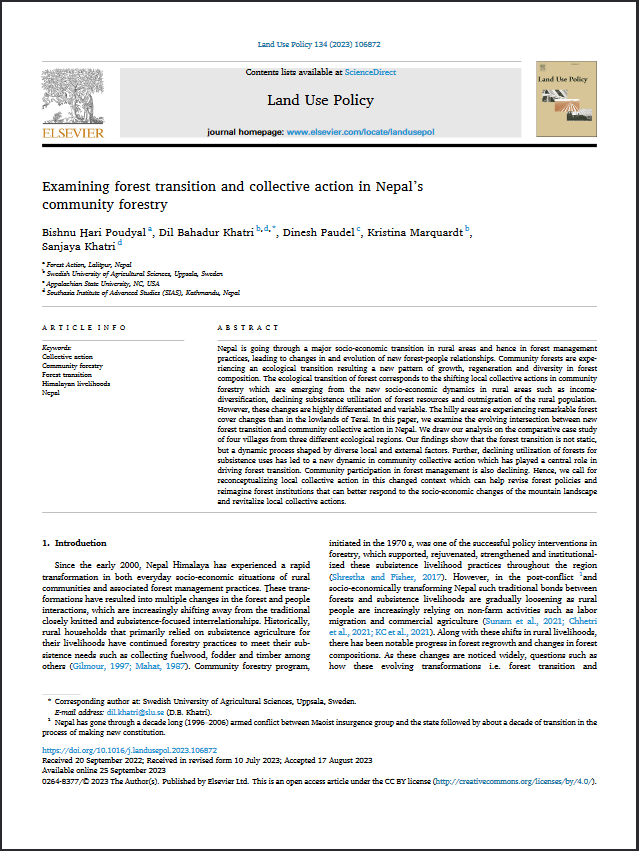Published online: December 2021
Authors: Sushant Acharya, Kribina Pathak, Chandra Lal Pandey
Abstract
The Nepalese agriculture is shifting from subsistence farming of cereal crops to commercial farming of highvalue agriculture (HVA) crops. This shift in agriculture for high income have implications in the livelihood of farmers and the farming system. In this paper, we have explored on these two interlinked issues, HVA based livelihoods and the risks in farming. We took two cases, cardamom from Ilam and vegetables from Makwanpur for in-depth study and collected qualitative data from 52 farmers. We interpreted data following the household livelihood resilient framework and the farming system resilient framework. Findings show that income and employment from HVA strengthen financial asset at the beginning and then contribute to build other livelihood assets which re-enforce each other and improve the livelihood condition of farmers. In addition, HVA crops face risks as a result of price fluctuation and climate change which majority farmers have adapted through mobilisation of assets and additional investments. We conclude that HVA can withstand shocks like price fluctuation and climate change and provide base for resilient livelihood of the farmers. As small farmers have lower adaptive capacity than those with large scale farming, HVA policies and interventions should be favorable and reachable to all farmers, particularly those involved in small-scale farming practice.







